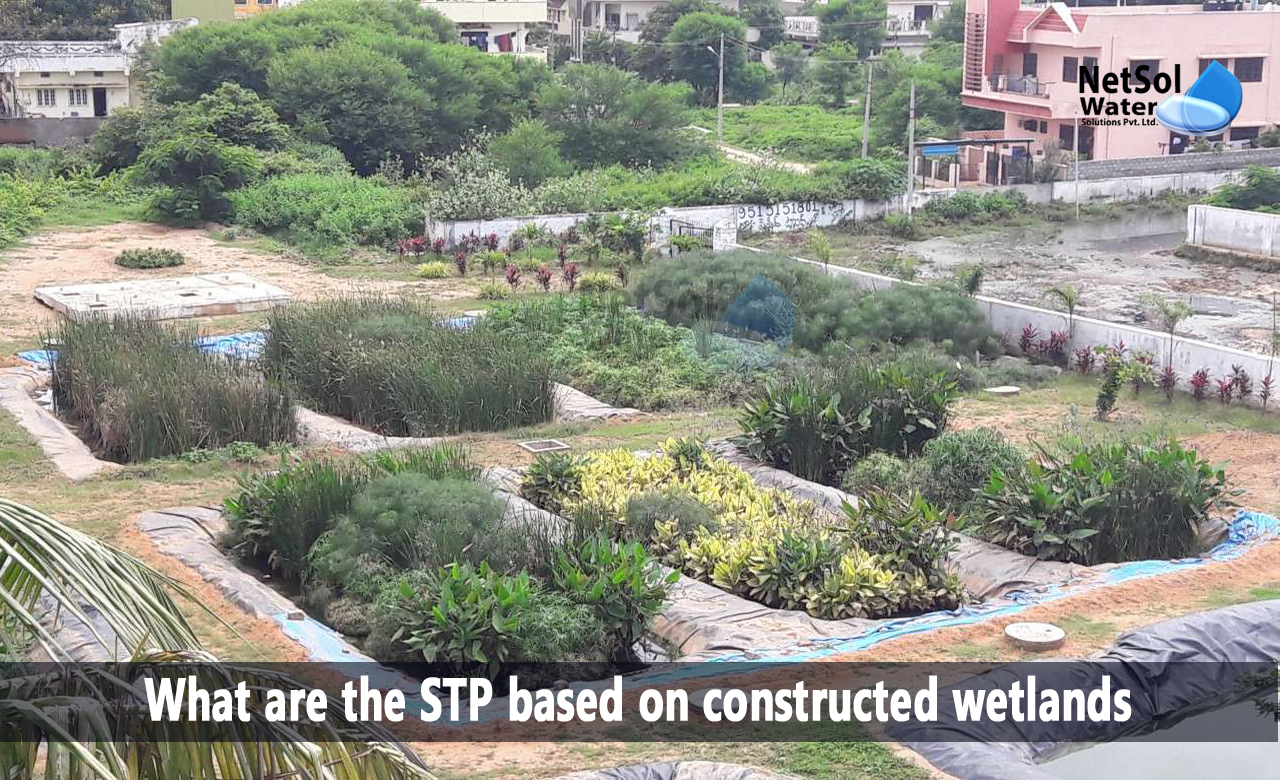A constructed wetland is an organic wastewater treatment system that mimics, and improves the effectiveness of naturally occurring wetlands' purification processes.
Water, aquatic plants (such as reeds and duckweed), naturally occurring microorganisms, and a filter bed (typically made of sand, soil, and/or gravel) are used in the system. Wetlands that have been built can be used for secondary or tertiary wastewater treatment.
Existence of different designs in constructed wetlands
There are many diverse designs, such as vertical wetlands, which need less space but more power to perform tasks, like pumping or syphoning than horizontal wetlands, which can rely on terrain and gravity instead.
The extensive options in design, materials and technology allow the constructed wetland, to be adapted to local conditions and land availability. Costs vary according to the cost of materials and land, but the constructed wetlands are a very economical way to treat wastewater where land is less expensive, and more readily available.
How do Constructed Wetlands function?
Constructed wetlands, like natural wetlands, act as a biofilters and can remove a wide range of contaminants, from water or wastewater such as organic matter, nutrients, pathogens, and heavy metals.
Constructed wetlands remove other contaminants such as suspended particles, organic matter, and nutrients (nitrogen and phosphorus). All pathogens (bacteria, viruses, protozoa, and helminths) are supposed to be eradicated to some extent, in a created wetland. Surface wetlands are less effective than subsurface wetlands at removing pathogens.
What are the STP based on constructed wetlands?
Wetlands, among other things, can handle raw sewage, stormwater, agricultural, and industrial wastewater. By mimicking the activities of natural wetlands, they absorb runoff, reduce nutrient loads, and provide a diverse animal habitat. These wetlands treat either wastewater or greywater.
STP Concept Based on Constructed Wetlands
Plants, microorganisms, and substrates, in general, act as filter and purification systems.
First, water is slowed as it enters the wetland, allowing solids to settle. Plant roots and the substrate filter out larger particles in the sewage as water flows through the constructed wetland.
Pollutants and nutrients in wastewater are then naturally broken down and taken up by bacteria and plants, allowing them to be removed from the water.
The pathogens present in wastewater will be killed by the retention time in the wetland, which varies depending on the design and desired quality level, as well as UV radiation and plant secretion of antibiotics.
Water can be safely released into surface waters or used for a variety of purposes after treatment, in a constructed wetland.
Contaminants removed by STPs based on wetlands
Wetlands filter toxins from wastewater using a combination of physical, chemical, and biological processes. Understanding these processes is critical not only for designing wetland systems, but also for determining how chemicals behave once they enter the marsh.
Aerobic and anaerobic microorganisms aid in the breakdown of organic matter. Through microbial nitrification and subsequent denitrification, nitrogen is released into the atmosphere as a gas.
Phosphorus is co-precipitated with iron, aluminium, and calcium compounds in root-bed media. Suspended solids settle in the water column and are physically filtered out by the medium, in surface flow wetlands.
Harmful bacteria and viruses are also reduced in subsurface flow and vertical flow systems by filtration, and adsorption by biofilms on the gravel or sand media.
Benefits of STPs based on constructed wetlands
1. Construction, operation, and maintenance costs are kept to a minimum.
2. Utilizes simple-to-understand and manage technology.
3. Low operational energy consumption is required.
4. Water is prepared for reuse.
5. Helps to keep groundwater and surface water levels stable.
6. It helps to protect the environment by providing a home for plants and animals.
7. It serves as a reservoir for water.
8. Natural aesthetics that is pleasing.
I?f you have any questions about sewage treatment plants based on constructed wetlands, please contact the Netsol Water team right away.
Our team is an expert in sewage treatment and can help you tailor a solution to your specific requirements. We collaborate with our clients to design a customized wastewater treatment solution, which meets your specific requirements, as well as an on-going service plan to completely maintain your WWTP.



